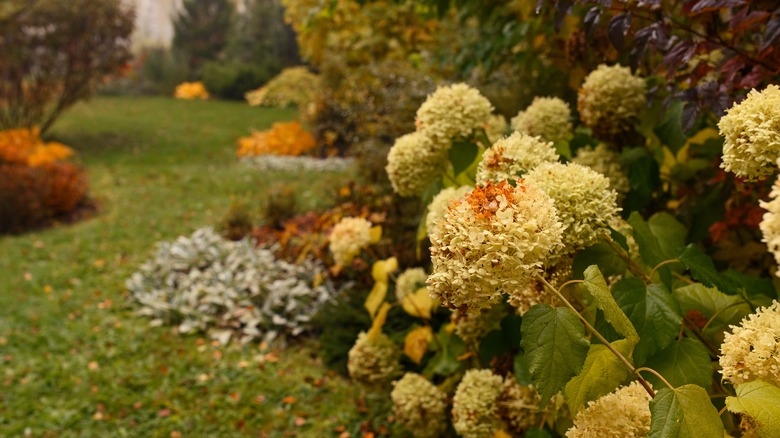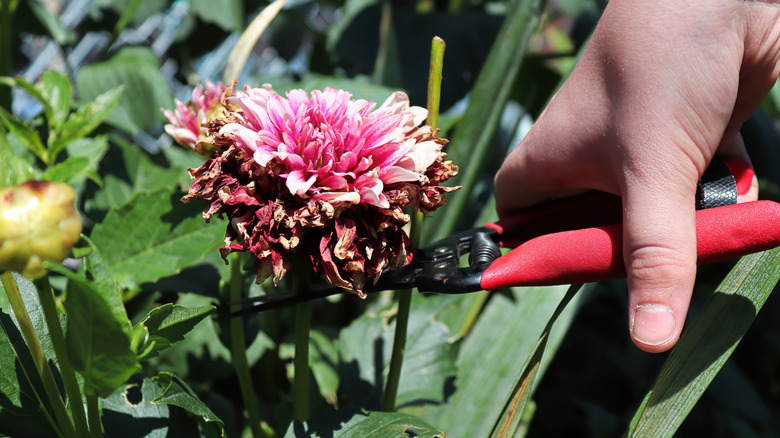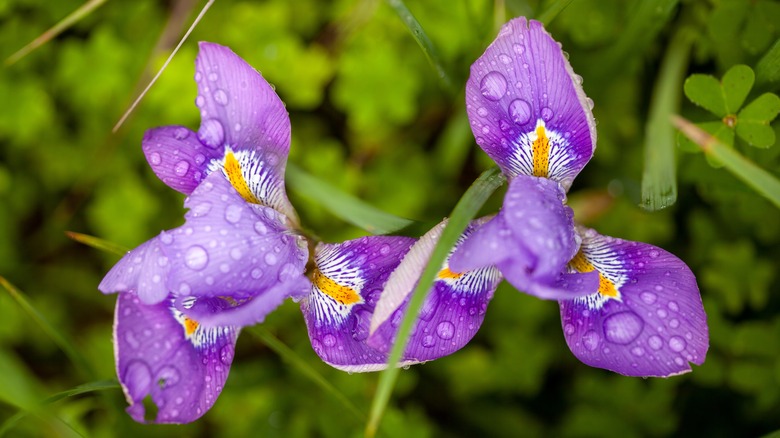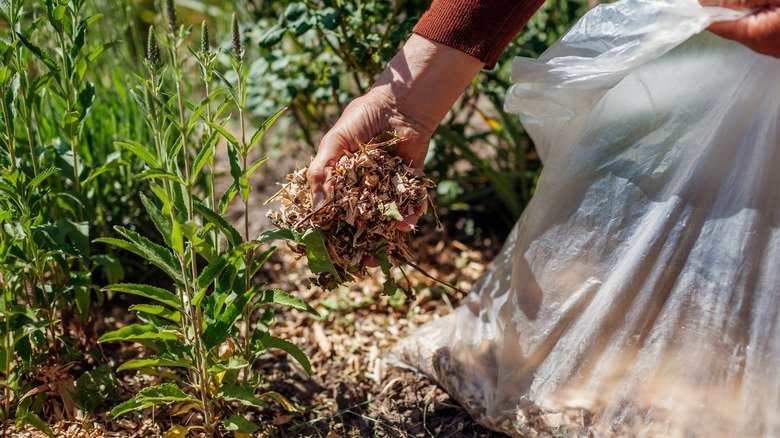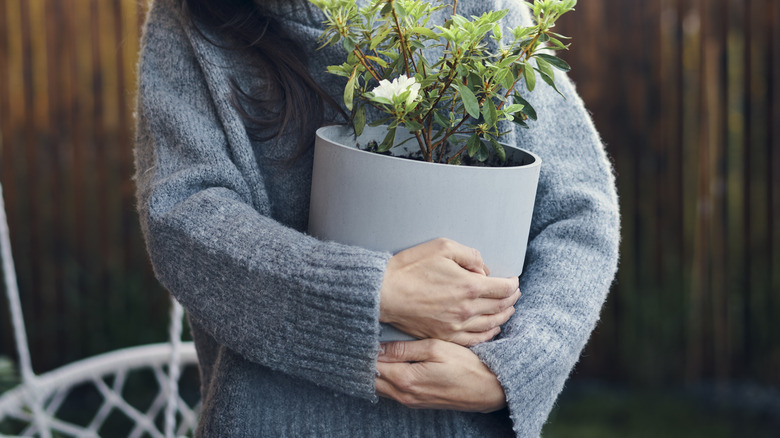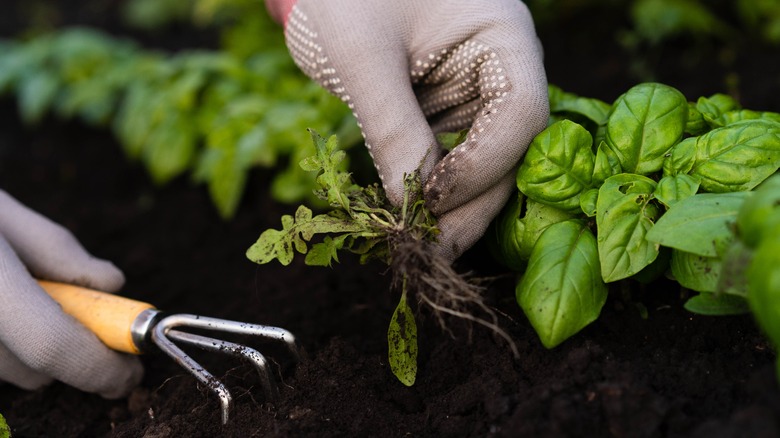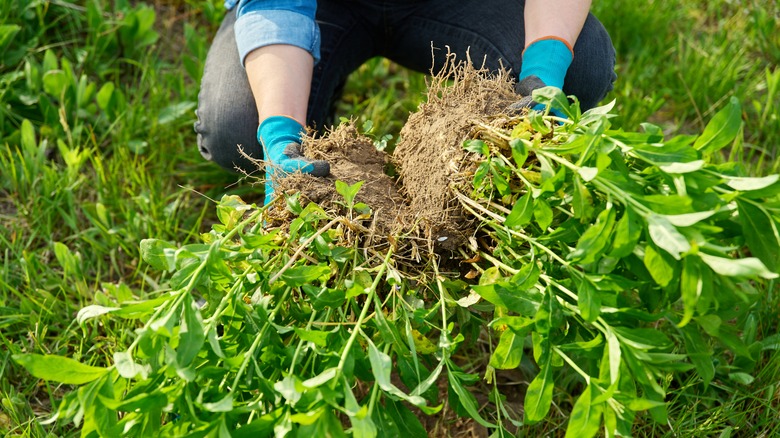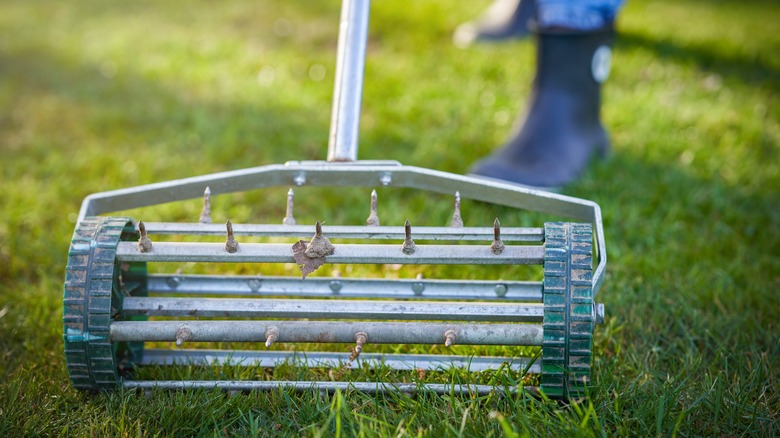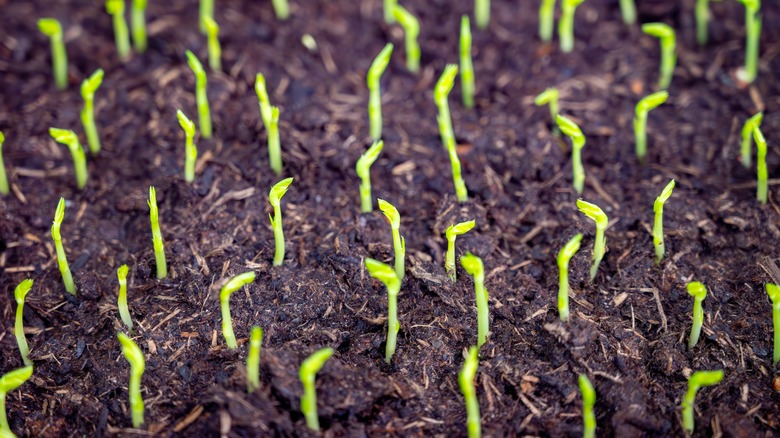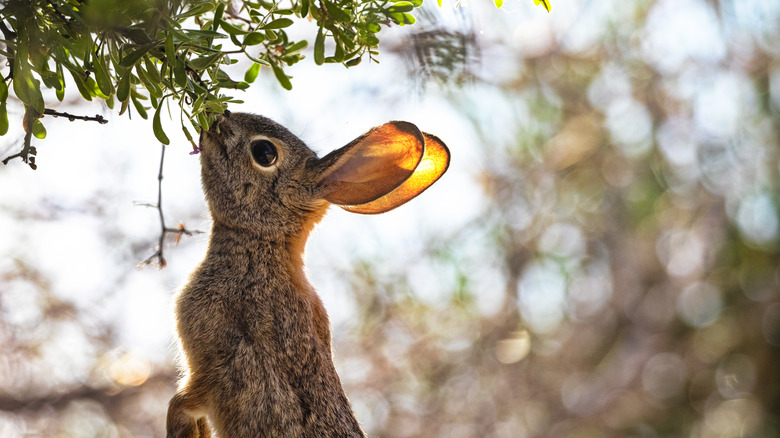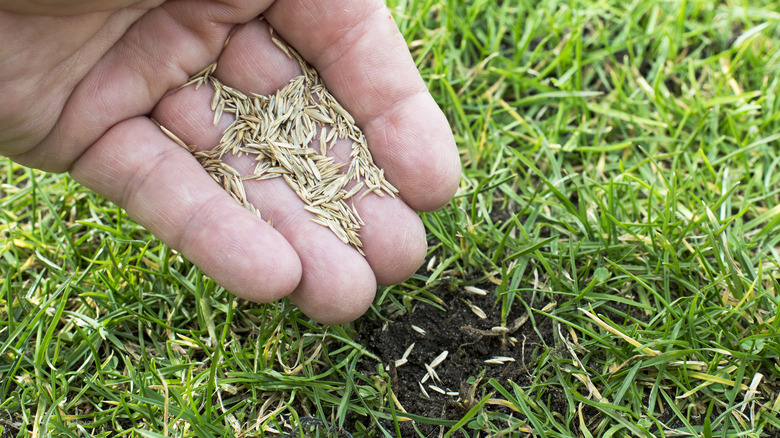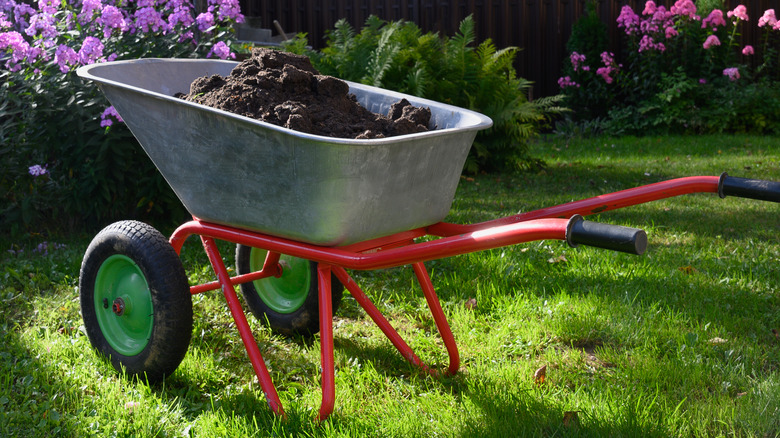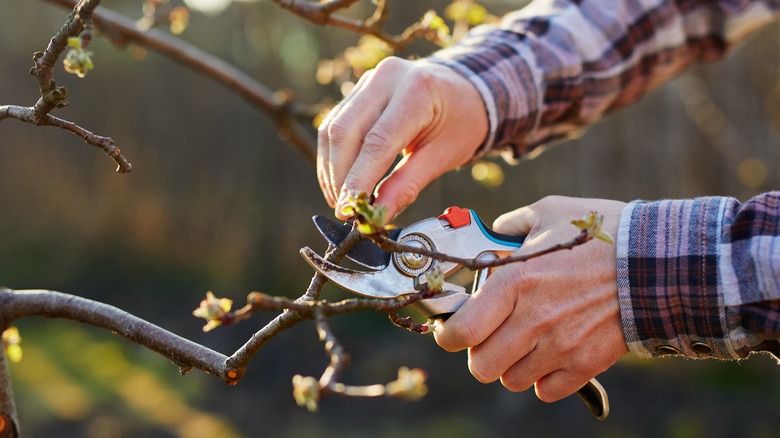Essential Tips To Transition Your Garden From Summer To Fall (& Mistakes To Avoid)
We may receive a commission on purchases made from links.
Spring is usually the busiest time for gardening enthusiasts, but don't be fooled into thinking that this is the only time of year your yard needs attention. As summer descends into fall, there are a range of tasks you can embark on that will make for a healthier garden through fall and winter. Some transitional tips, like disposing of fading annual plants, can even make life easier for you come next spring. It's also worth remembering that just because we spend less time outdoors in the cooler seasons, this doesn't mean the garden cannot be enjoyed. Maintaining your garden in late summer and early fall can help to ensure your yard looks neat and tidy through the latter half of the year, creating a pleasing view any time you look out your windows.
The warmer months are usually a time of rapid growth for our gardens, so it makes sense that they will benefit from some TLC at the end of this period. Following tips that help your yard transition from summer to fall can ensure you keep on top of garden maintenance before it gets out of hand. These tips can also bring with them plenty of health benefits for your plants, so you can continue to enjoy a thriving and beautiful outdoor space.
Remove fading annuals to tidy up beds
By the end of summer, most warm weather annuals will be looking worse for wear. These types of plants perform a whole life cycle throughout the warmer seasons and will stop flowering and begin to die back as summer fades. Unlike perennials, these plants won't be given a new lease on life the following spring, so they need to be removed. Getting rid of fading annuals will tidy up the look of your flowerbeds but this task also has more practical benefits. Insect infestations along with diseases can hide amongst plant debris through winter, then emerge in spring to cause damage to your plants. Eliminating these hiding spots by removing dead or dying annuals will help to ensure these issues don't occur.
Smaller annuals with shallow root systems, such as violas, can be pulled from the soil by hand. Those with more extensive root systems may require a shovel for digging out. Remember that garden waste doesn't need to go to waste. Plant debris can be composted to allow the nutrients to be recycled and worked back into the earth, however, there's something you need to know before adding diseased plants to your compost pile. Diseased plant debris, along with insect-infested plant debris, can carry those diseases to your new plants. If in doubt, exercise caution and properly dispose of your faded annuals.
Plant fall flowers for added interest
The removal of warm weather annuals in your flower beds will leave some vacant space that can be occupied by hardy blooms. Adding these plants to your garden will make your beds look fuller, and they can also add some much-needed color to the fall landscape. As you might expect, there's less choice when it comes to fall-flowering plants compared to summer-flowering plants, but it shouldn't be too difficult to find some at your local nursery that can be added to the empty areas of your garden. This is also a good time to sow the seeds of hardy annuals which will flower the following year.
One of the best plants to add to the garden as summer transitions to fall is the cyclamen. This will reliably bloom until the first frost, and it can even last through winter if it's positioned in a protected spot. Other flowers perfect for a vibrant fall and winter garden include Algerian iris and Lenten rose which can bloom from fall right through to the following spring. Plant the Algerian iris (Iris unguicularis) in well-draining soil in a sunny spot, and enjoy the pretty flowers in shades of purple and blue at a time when many other plants enter dormancy.
Mulch the soil to insulate roots against dropping temperatures
Mulch can be added to the garden at any time of year, but it's especially beneficial to apply a layer as the summer ends and fall begins as a means of protecting plant roots when temperatures begin to drop. Mulching the soil adds a layer of insulation, so the ground is less likely to freeze and damage plant root systems over winter. Mulching at this time of year also increases the soil's ability to absorb moisture, ensuring plants get the water and nutrients they need to survive. It does this by holding moisture close to the surface of the soil where it can be absorbed slowly. Soil that has not been mulched can freeze, and this increases the likelihood of runoff.
To choose the best type of mulch for your garden, consider the key benefits you want to gain for your plants. You can save money and help the environment by recycling other garden materials to use as mulch, such as well-rotted straw, garden compost, grass clippings, or shredded leaves. You can also purchase mulches that might look more attractive in the garden, such as pebbles and wood chippings. Prepare your soil by removing weeds, then lay the mulch directly on top. For the most effective mulching, apply between 2 and 3 inches of your chosen material. Do not allow tree stumps to come into direct contact with mulch, as this can cause softening and encourage disease.
Bring warm-weather plants indoors
There are many benefits to moving your houseplants outdoors in the summertime, but after they've received a boost from the humid air and nutrients in rainwater, they need to be settled back indoors. Although the outdoor daytime temperatures might still be warm enough for houseplants as summer turns to fall, the overnight temperatures can be a completely different story. Most houseplants should not be outdoors when nighttime temperatures are predicted to be any lower than 50 degrees Fahrenheit. Ensuring houseplants are not subjected to drastic temperature changes is vital to help them thrive.
Many houseplants are sensitive to sudden changes in the environment, so at the end of summer, it's best to gradually re-introduce houseplants to their indoor habitat. This can help to avoid shock, which can be fatal for plants. Start out by bringing houseplants inside for a few hours each day, and over the space of a week, gradually increase their time spent indoors. After two weeks, bring them inside and set them in their permanent spot for the cooler months. Alternatively, if you have a cooler room in your home, such as an unused spare bedroom, put the plant in there so it can acclimatize to being back inside. Plants can also struggle to get used to dry indoor air, so you can make the transition easier by spritzing the leaves daily with a water mister or using a humidifier.
Remove weeds that have sprouted over the summer
Summer is a time of rapid growth for many plants, and this unfortunately includes weeds. Weeds are easiest to remove when they are still young and have fairly weak root systems, making the end of summer and the beginning of fall an ideal opportunity for removing weeds before they take hold. By removing weeds at this time, you can deny them the opportunity to continue growing through fall and winter when they can become stronger, and you will also be tidying up the look of your yard for the cooler months.
The best way to get rid of weeds in your garden that have sprouted up at the end of summer is simply by hand. Grasp as much of the foliage and stem as you can, holding it close to the point at which it enters the soil, and give it a tug. In most cases, this will pull out the weed and its root system, stopping it in its tracks. If there's a large amount of weeds, a rake might present a time-saving option. Just be careful not to disturb the soil too much as this can bring weed seeds to the surface where they can germinate.
Divide any perennials that grew too large
If you have perennial plants that have outgrown their current spot, early fall is the perfect time to divide them. Dividing plants offers many benefits. Once divided, plant root systems have more space to grow and aren't competing for moisture and nutrients, which will help them to become healthier. Dividing perennials also allows you to have more of the same plants in your garden without it costing you a dime. The cooler temperatures in early fall help plants conserve water, which is essential for roots that get damaged when divided. Plants also transfer energy to their root system in fall as they prepare for their dormant season, and this can help a newly divided plant survive the process of division.
To prepare for dividing a perennial plant, water the soil the day before you plan to divide the plant. Choose a cool, early fall day, ideally when rain is forecast during the next week. Use a spade to dig up your plant and pull it from the soil with as much of the root ball intact as possible. Tease the roots with your fingers to remove excess soil, and then set about dividing the plant. You can do this by separating the plant into two or more sections with your hands, or you can use a spade or sharp knife. Replant each "new" plant in your chosen spot, and water generously to settle in.
Aerate the lawn to improve grass growing conditions
In September, when summer is drawing to a close, lawns can benefit from aeration more so than at other times of the year. This is because aerating the lawn does cause some damage, but the growing conditions in late summer are most favorable to allow the lawn to quickly recover. Aeration offers many benefits that can lead to a healthier and more lush lawn. For example, aeration improves soil compaction, and as a result, the nutrients and water are better able to penetrate for improved growth. Aerating the lawn can also impede the accumulation of thatch, which is a problem for many home gardeners.
You can aerate your lawn for healthier grass in various ways, depending on the condition of your soil, the size of the lawn, and your personal preferences. The best way to aerate, according to Iowa State University Extension and Outreach, is using a core aerator. This uses hollow metal tubes to remove plugs of soil from the lawn. You can also purchase garden tools with spikes that make holes in the lawn, such as these aeration shoes from Amazon, but the efficacy of these can vary. For very compacted soils, you can aerate twice a year in September and April. Average lawns will suffice with one aeration per year in late summer or early fall.
Plant leafy vegetables for a fall crop
There's no reason to stop growing vegetables just because fall is approaching. In fact, several types of vegetables can be planted in late summer and harvested in fall. The benefit of this, of course, is that you can continue to relish homegrown vegetables for more of the year. If you wind up growing more than you can eat, you can gift the fruits of your labor (quite literally!) to friends, family, and neighbors.
Leafy greens like spinach and lettuce can be planted anywhere from the middle of August to early September. They perform better when growing conditions are mild and the soil hasn't dried out. This makes late summer and early fall the perfect time to grow that tasty veg because temperatures will have dropped and rainfall is more likely. You can also plant radishes in mid to late September for a fall harvest. The Royal Horticultural Society suggests sowing winter radishes in late summer for a harvest that can go from fall all the way through to the following spring. The radishes have a mild taste after cooking and are popularly used in stir-fries.
Protect plants from hungry wildlife
As fall approaches, it's a good idea to protect your plants from hungry wildlife. Throughout winter, food is more scarce compared to other times of the year, so rabbits, rats, mice, and other creatures will turn to gardens to fill their tummies. Wildlife with gnawing teeth, such as rodents, will chew the bark from woody trees and plants, which can strip them of their protective layer and welcome disease or pest infestations. Plants that have been ravaged by wildlife can also look unsightly, and in some cases, they may not recover. It is common for deer, voles, and rabbits to feed on the stems and foliage of plants in winter, in some cases completely eating them until there is nothing left above ground.
To keep unwelcome visitors off your plants, create a barrier around them. This can be done using wire cages placed around the perimeter of shrubs and trees, or mesh cloth circled around vulnerable plants to create a cylinder barrier. Recognizing which pests your area suffers from can help you to customize the plant protection. For example, to stop mice, the barrier should be inserted several inches below ground level to prevent the rodents from digging underneath it to gain access to the plant. For rabbits, a barrier at a height of around 2 feet above the expected snow line will be necessary to prevent access.
Start a new lawn from seed
If you'd like a lush lawn to enjoy next year, sow grass seeds at any time from the middle of August to the middle of September. This is the opportune time to plant a new lawn because the seeds will have a high germination rate in soil that has warmed up over the summer months. Grass seed also grows rapidly in typical late summer and early fall temperatures, when the days are warm but the evenings are cool. The greater likelihood of rainfall at this time of year also means you won't need to be constantly outside watering the lawn, as you would if you started seeds in early or mid-summer. As an added bonus, early fall is a time when few weed species germinate, so your grass seed won't be up against stiff competition in the lawn.
The best tips and tricks for growing grass from seed include proper preparation. Aerating your lawn and removing thatch before seeding can go a long way in helping your lawn thrive. You'll also need to choose a seed mix that is most appropriate for your location and the growing conditions in your yard. For example, a lawn that will predominantly be in the shade could use creeping fescue grass seed. After scattering seeds and watering the soil, it can be useful to protect the lawn seed from hungry birds with a layer of horticultural fleece, such as this one from Amazon.
Don't fertilize plants as fall approaches
A common mistake made by inexperienced gardeners is fertilizing plants too late in the season. Fertilizer should be utilized during the active growth phase, which for most plants is spring and early summer. If you use fertilizer at the end of summer or the beginning of fall, you could be putting your plants at an increased risk from cold temperatures. This is because fertilizer encourages new growth, and if new growth occurs in early fall, the tender stems and foliage will not have had a chance to harden off. This leaves them susceptible to damage from cold and frost.
Avoid using fertilizer on the plants in your yard from midsummer onward. If you want to take action to keep your plants healthy, you can add a layer of well-rotted compost on top of the soil around your plants as a conditioner. The nutrients in the compost will get carried down to the deeper layers of the soil when it rains, where they will be available for the roots of the plant to absorb. Using compost as a top dressing is a much better idea than using fertilizer as summer transitions to fall because the nutrients are delivered more gradually. Using compost to fertilize your lawn and plants will not result in fresh growth this late into the season, ensuring your plants are kept healthy without putting them at risk.
Don't prune your plants in summer or fall
As tempting as it might be to neaten up your woody plants with a quick prune at the end of summer, this is definitely a task that should be avoided. Pruning encourages new growth, and if you prune as the cooler seasons arrive, you will be subjecting new growth to temperatures they may not be able to cope with. In order for new growth to survive the cold, it needs to have a chance to harden off, and this is not possible when pruning is carried out so late into the season.
Plants you shouldn't be pruning in the fall include forsythia and azaleas. Not only can late pruning lead to tender growth that cannot survive dropping temperatures, but it can also interfere with a plants ability to flower the following year. Instead of pruning woody plants in late summer or early fall, wait until the following spring. Pruning in the spring will enable the plant to recover more quickly, as this is when most plants are entering their active growth phase. The tender new growth will also have plenty of time to mature before it has to contend with cold temperatures later in the year. Of course, there are caveats to every rule, and it's important to pay attention to the individual needs of each plant. There are some plants you shouldn't be pruning in early spring, so always check your specific species before getting busy with your shears.
